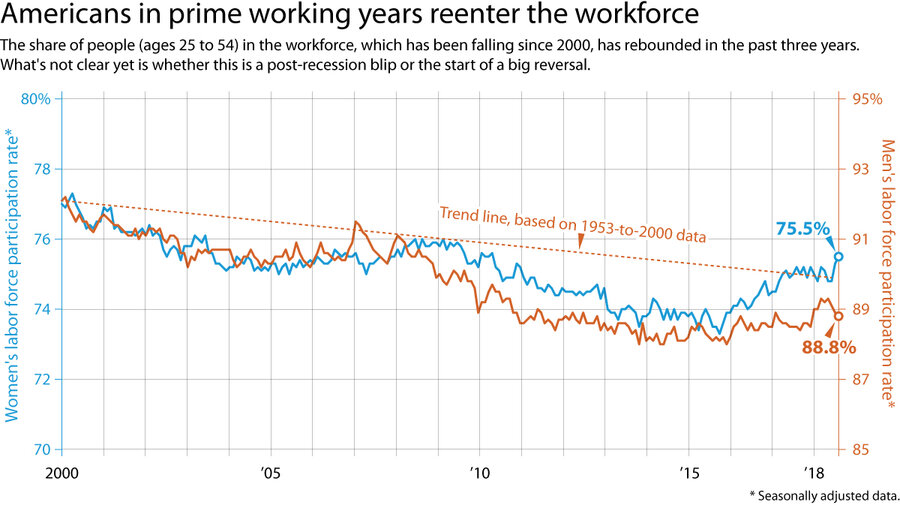A tight job market means opportunity – including for Americans with prison records, disabilities, or health challenges. And their participation could strengthen the economy in the long run.
Monitor Daily Podcast
- Follow us:
- Apple Podcasts
- Spotify
- RSS Feed
- Download
 Clayton Collins
Clayton Collins
Sure, 108.1 sounds like an off-the-dial pop radio station.
It was also the average temperature in California's Death Valley in July, the hottest average month ever notched anywhere in the United States and second only, worldwide, to the 108.5 degrees F. recorded in Iran in July 2000.
Heat records are being erased. More are expected to fall this weekend in Europe. The thermometer has already soared past 90 degrees F. above the Arctic Circle.
This isn’t just a patch of brutal weather, though even among those who accept the evidence-based scientific consensus that Earth’s climate is warming there’s lingering debate about the degree of humans’ role. Against that sweltering backdrop, the Trump administration slammed the brakes yesterday on agreed-upon moves to improve automakers’ corporate average fuel economy (CAFE) standards and lessen greenhouse gas emissions.
Environmentalists groaned. Perhaps more important, not even carmakers love the move. One reason: uncertainty caused by inevitable legal tangles and the prospect of different rules for different markets. Another: While shareholders, as one automotive writer I know points out, salivate over old-tech, high-margin luxury trucks (sold on 96-payment plans), automakers also keep eagerly dipping into new tech. That means lighter (yes, still safe) materials and means of propulsion that require less fossil fuel.
Innovation serves a growth market no firm can ignore. Apple this week became the first US firm to score a $1 trillion valuation. It got there by giving consumers features and products they didn’t know they wanted. By giving them efficiencies they hadn’t heard about. By never looking back.
Now to our five stories for your Friday.












